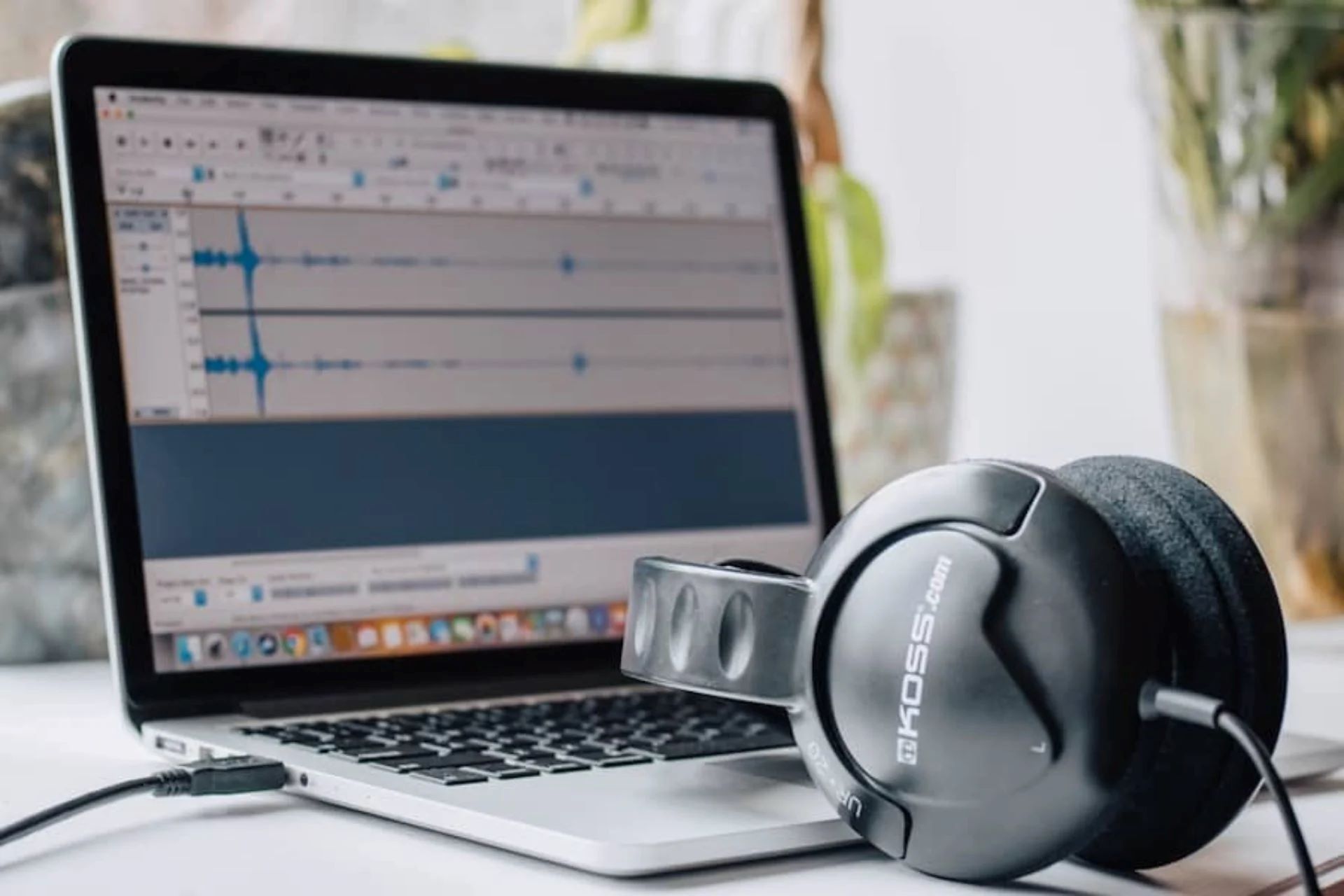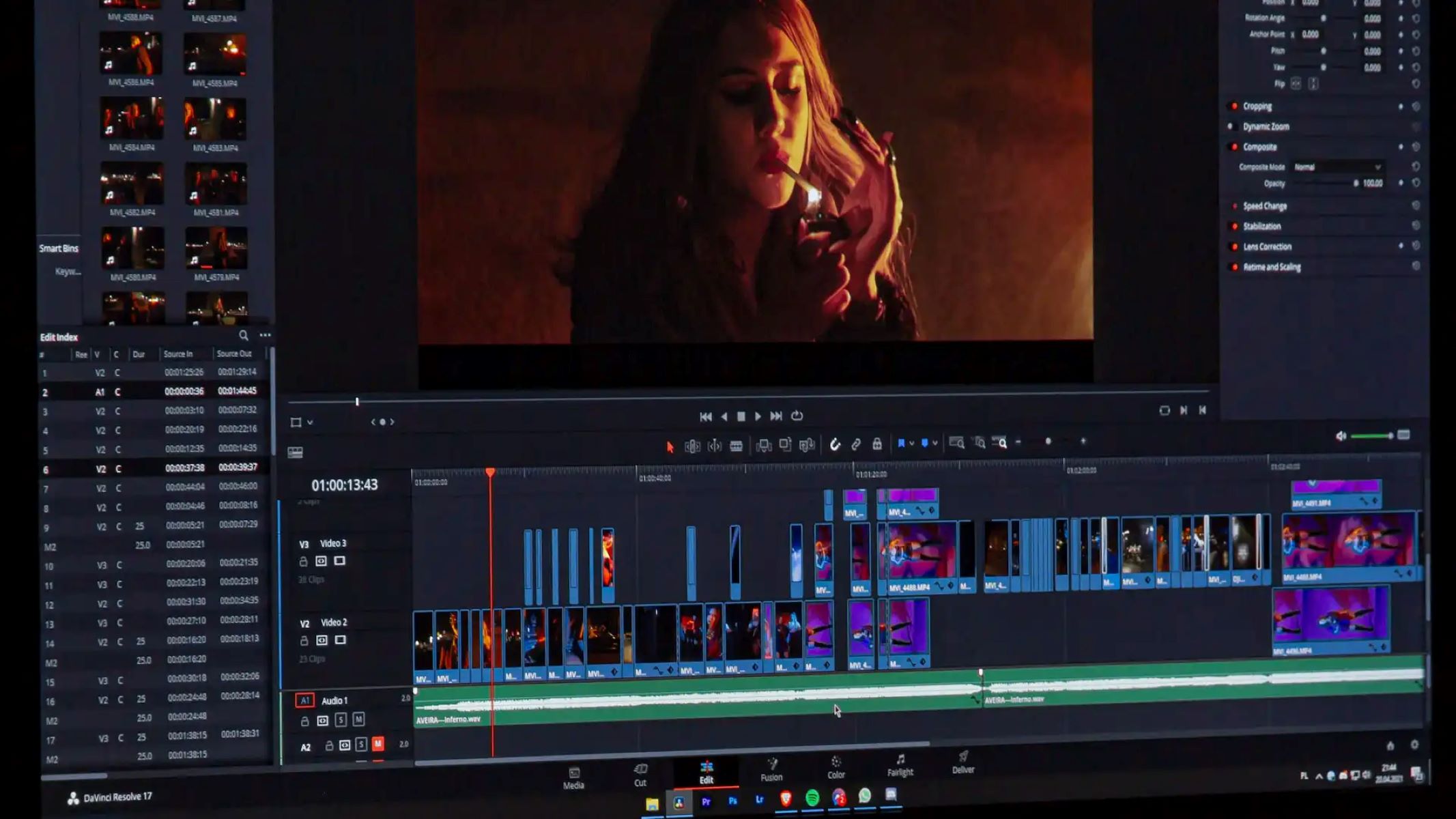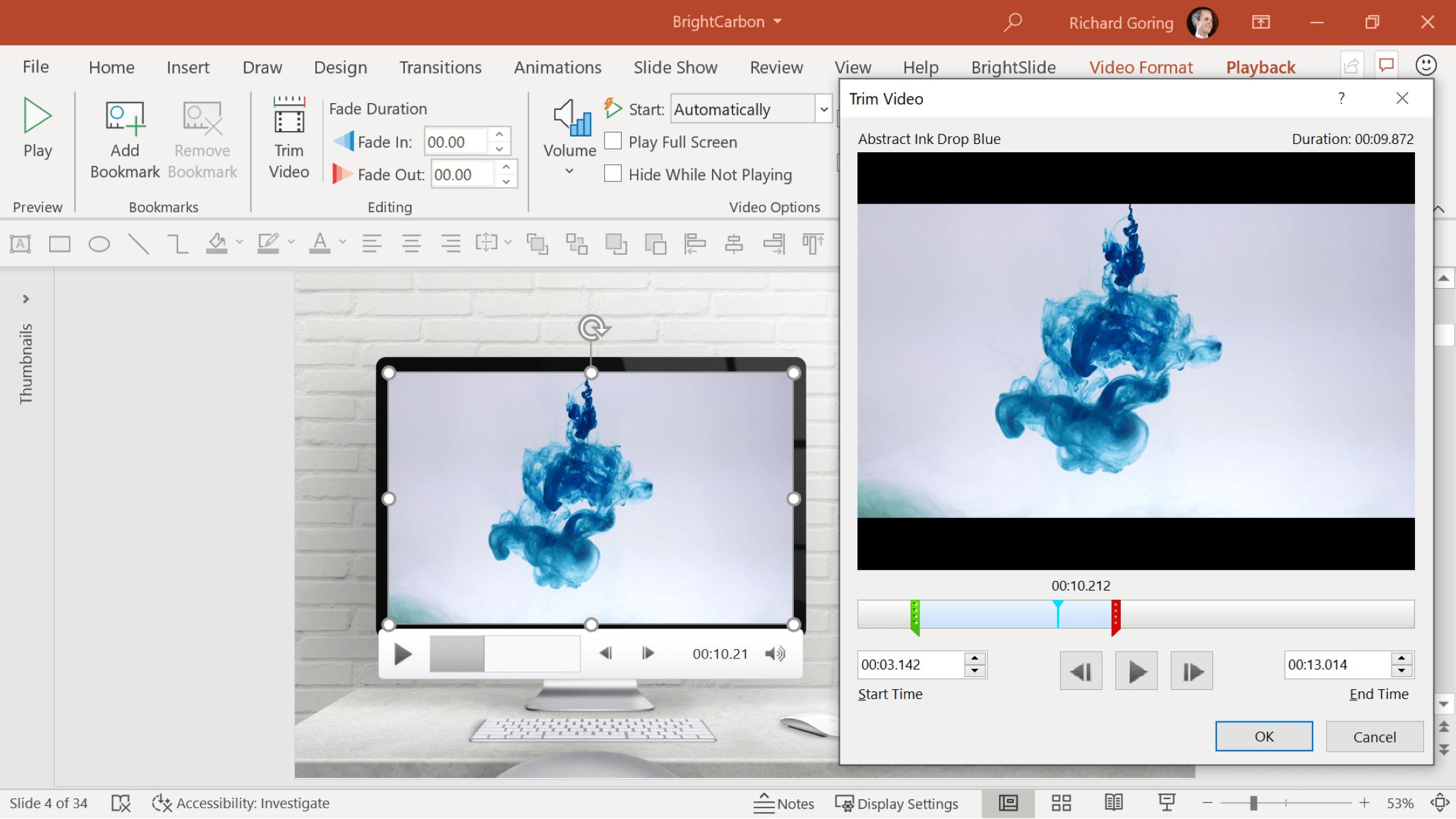Home>Production & Technology>Background Music>How To Identify Background Music In A Video


Background Music
How To Identify Background Music In A Video
Modified: January 22, 2024
Learn how to easily identify background music in a video with our step-by-step guide. Discover the best methods to find the perfect music for your projects.
(Many of the links in this article redirect to a specific reviewed product. Your purchase of these products through affiliate links helps to generate commission for AudioLover.com, at no extra cost. Learn more)
Table of Contents
Introduction
Background music plays a crucial role in setting the tone and enhancing the overall experience of videos. Whether it’s a movie, a commercial, a YouTube video, or a social media post, the right background music can captivate the audience and leave a lasting impression. But have you ever come across a video with a captivating background track and found yourself wondering what the name of that song is? If so, you’re not alone!
Identifying the background music in a video can be a challenging task, especially if you’re not familiar with the music or the artist. However, with the advancements in technology and the availability of various resources, it has become easier than ever before to identify background music in videos.
In this article, we will explore different methods and techniques to help you identify background music in a video. Whether you’re a content creator, a video editor, or simply a music enthusiast, understanding how to identify background music can unlock a world of possibilities, from discovering new artists to licensing music for your own projects.
By using a combination of technology, online resources, and your own intuition, you can uncover the mysteries behind the background music and enjoy a more enriched viewing experience.
Understanding Background Music
Before we delve into the methods of identifying background music in a video, it’s important to understand the role and significance of background music itself.
Background music, often referred to as incidental or underscore music, is a musical composition that accompanies a visual medium, such as a video, film, or presentation. Its primary purpose is to enhance the emotional impact of the visuals, create a specific mood or atmosphere, and engage the audience on a deeper level.
Background music can serve various purposes, depending on the context of the video. It can evoke emotions, such as joy, suspense, or sadness, and contribute to the narrative or story being told. It can also provide a sense of continuity or flow between different scenes, ensuring a smooth and cohesive viewing experience.
Moreover, background music is often used in marketing and advertising to elicit specific responses from the audience. It can help create brand associations, reinforce messaging, and increase brand recall. In this context, selecting the right background music becomes even more critical, as it can directly impact the effectiveness of a promotional video or commercial.
Understanding the role and intended impact of background music is essential, as it can guide your approach to identifying and utilizing it effectively. By recognizing the importance of background music and the emotions it can evoke, you’ll be better equipped to appreciate its contribution to the overall video and seek out the specific tracks that resonate with you.
Now that we have a better understanding of the significance of background music, let’s explore the various methods available for identifying background music in a video.
Methods to Identify Background Music
When it comes to identifying background music in a video, several methods and tools can be employed. Let’s explore some of the most effective ways to identify that catchy tune.
- Using Shazam or Similar Apps: Shazam is a popular music recognition app that allows you to identify songs by listening to a snippet of the music. Simply launch the app, hold your device’s microphone close to the audio source, and let it analyze the sound. Within seconds, Shazam will provide you with the song title, artist name, and additional information. Other similar apps, such as SoundHound and Musixmatch, also offer music identification services and may be worth exploring.
- Using Online Music Identifiers: In addition to mobile apps, there are several online platforms that specialize in music identification. Websites like Midomi, ACRCloud, and AudioTag can help you identify background songs by uploading an audio snippet or providing a URL to the video. These services utilize advanced algorithms to analyze the sound and match it with their extensive music databases.
- Manual Identification: If you’re unable to use music recognition apps or online services, you can try manually identifying the background music. Listen closely to the song and pay attention to the lyrics or any distinctive melodies. Use search engines like Google or Bing to enter snippets of lyrics or any other relevant information you can gather. With a bit of patience and persistence, you may come across articles, forums, or playlists that feature the identified song.
- Consulting with Professionals: If all else fails, or if you’re working on a professional project that requires accurate identification of background music, it’s best to consult with professionals in the music industry. Music supervisors, licensing agencies, and composers have vast knowledge and resources to help identify and acquire the rights to specific tracks. Reach out to these experts for guidance and assistance in your search.
Keep in mind that the success of these methods can vary depending on the availability and popularity of the background music, as well as the accuracy of the information you provide. It’s important to be as detailed and specific as possible when seeking identification help.
Now that we have explored the various methods of identifying background music, let’s move on to some tips and tricks that can increase your chances of successfully identifying that elusive song.
Remember that while these methods offer effective ways to identify background music, it is essential to respect and adhere to copyright laws when using identified songs for your own projects.
Using Shazam or Similar Apps
One of the easiest and most convenient ways to identify background music in a video is by using popular music recognition apps like Shazam. These apps utilize advanced technology to analyze audio snippets and provide instant information about the song, including the title and artist.
To use Shazam or a similar app, simply open the application on your mobile device and tap the “Listen” or “Identify” button. Allow the app access to your device’s microphone and position it near the audio source where the background music is playing. The app will then capture a short portion of the music and compare it against their extensive database.
Once the recognition process is complete, Shazam will display the song title, artist name, album, and additional information such as lyrics or links to streaming platforms. You can also save the identified song in your Shazam library or share it with others through various social media platforms.
It’s worth noting that these apps work best with clear and distinct audio, so ensuring a high-quality audio source will increase the likelihood of accurate identification. Even in crowded or noisy environments, Shazam and similar apps can often deliver reliable results.
Aside from Shazam, several other apps provide music recognition services. SoundHound is another popular option that offers similar functionalities and is compatible with both iOS and Android devices. Musixmatch, known for its lyrics feature, also includes music identification capabilities.
If you prefer using a web-based platform rather than a mobile app, services like Shazam also have online counterparts that allow you to upload audio snippets or provide links to videos for identification.
Using music recognition apps provides a quick and efficient way to identify background music in videos. With just a few taps, you can uncover the mystery behind a catchy tune and gain access to more information about the song and artist.
Remember to ensure that you have a stable internet connection when using these apps to guarantee accurate identification results.
Using Online Music Identifiers
If you don’t have access to music recognition apps or prefer using a web-based platform, online music identifiers can be another valuable resource for identifying background music in a video. These websites utilize advanced algorithms and expansive music databases to match the audio sample you provide with the corresponding song.
One popular online music identifier is Midomi. With Midomi, you can either sing or hum the melody of the background music or simply upload an audio snippet. The platform will then analyze the sample and generate a list of potential matches, along with song titles, artist names, and other relevant information.
Similarly, ACRCloud is another reliable online service that offers music identification capabilities. By uploading a short segment of the background music or providing a URL to the video, ACRCloud will compare the audio against its extensive database and provide accurate results within seconds.
AudioTag is another web-based option that allows you to upload audio snippets or provide URLs for identification. It uses sound fingerprinting technology to analyze the sample and present possible matches, complete with song information and additional details.
When using online music identifiers, it’s important to provide the best quality audio sample possible for optimal results. Clear audio with minimal background noise ensures a higher chance of accurate identification.
These online platforms are user-friendly and accessible, making them a convenient choice for identifying background music in videos. While they may not have the extensive features of dedicated music recognition apps, they still offer reliable identification results.
Remember to explore multiple online music identification services for the best chance of finding a match, especially if one platform does not provide satisfactory results. Different platforms may have different music databases, so it’s worth trying a variety of options to increase the chances of success.
By utilizing online music identifiers, you can seamlessly identify background music in videos and gain access to valuable information about the identified song and artist.
Be patient when using online music identifiers, as the identification process may take a few moments to generate accurate results.
Manual Identification
If you’re unable to use music recognition apps or online services, manual identification can be an effective alternative for identifying background music in a video. While it requires a bit more effort and research, it can still yield positive results.
Here are some steps you can take for manual identification:
- Listen closely: Pay close attention to the background music in the video. Listen for any lyrics, melodies, or recognizable patterns that can help you narrow down the search.
- Google the lyrics: If you can clearly understand some of the lyrics in the background music, try searching for those specific lines using search engines like Google or Bing. Include quotation marks around the lyrics for more precise results. You may come across forums, articles, or playlists that feature the identified song.
- Seek community help: Utilize online communities and forums dedicated to music identification. Websites like Reddit and various music-specific forums have active communities of music enthusiasts who are often willing to assist in identifying unknown songs. Provide as much information as possible about the video and the background music, such as the genre, any lyrics or melodies you remember, or the mood it conveys.
- Explore music recognition forums: Some websites and forums are specifically designed to help identify unknown songs. Platforms like “Name that Song” and “What’s That Song” allow users to submit audio snippets or descriptions of unidentified music, and other members of the community can pitch in and provide answers based on their knowledge and expertise.
By using these manual identification techniques, you can tap into the collective knowledge and resources of the online music community, increasing the chances of successfully identifying the background music in a video.
It’s important to note that manual identification may not always guarantee immediate results. It requires patience, persistence, and sometimes a bit of luck. However, with enough determination and the help of online communities, you may be able to uncover the name of that catchy background song.
Remember to credit the original artist and obtain the necessary permissions if you plan to use the identified background music for your own projects.
Consulting with Professionals
If all else fails or if you’re working on a professional project that requires accurate identification of background music, it’s best to consult with professionals in the music industry. These experts have extensive knowledge and resources that can help you identify and acquire the rights to specific tracks.
Here are some professionals you can turn to for assistance:
- Music supervisors: Music supervisors are professionals who specialize in selecting and licensing music for various media projects. They have a deep understanding of different music genres, styles, and licensing processes. Contacting a music supervisor can provide valuable insights and guidance in identifying background music and navigating the licensing requirements if you wish to use the identified song in your own project.
- Licensing agencies: There are several licensing agencies that represent artists and music rights holders. They can help you identify background music, provide licensing information, and assist in obtaining the necessary permissions to use the identified song legally. Reach out to these agencies for advice and support in your search.
- Composers and musicians: If you’re particularly drawn to a certain style or sound in the background music, consider reaching out to composers or musicians who specialize in that genre. They may have insights or connections that can help you identify the specific track or artist.
When consulting with professionals, be prepared to provide as much information as possible about the video, including the specific scene, context, and any details about the background music that you have observed. This will help them narrow down the search and provide more accurate guidance.
Keep in mind that consulting with professionals may involve costs, particularly if you require their services for extensive music research and licensing. Be prepared to discuss any fees or arrangements upfront to ensure a transparent and fair working relationship.
By seeking assistance from professionals, you can tap into their expertise and access industry-specific knowledge to identify background music accurately. They can guide you through the process, helping you find the desired song and potentially assist with licensing and rights clearance if needed.
Remember to respect copyright laws and obtain the necessary permissions when using identified background music in your own projects.
Tips for Successful Identification
Identifying background music in a video can sometimes be a challenging task, but with these helpful tips, you can increase your chances of successful identification:
- Take note of lyrics and melodies: Pay close attention to any lyrics or distinctive melodies in the background music. Jot down these details to aid in your search later on.
- Record a clear audio sample: If you’re attempting manual identification or using online services, make sure to record a clear and noise-free audio sample. This will improve the accuracy of the results.
- Focus on genre and style: Consider the genre and style of the background music. This information can help narrow down your search and guide you in identifying similar artists or tracks.
- Utilize search engines and music databases: Make use of search engines like Google and music databases like AllMusic or Discogs. Enter any available information about the background music, such as artist names or relevant lyrics, to find relevant search results.
- Engage with online communities: Join online forums, music communities, or social media groups dedicated to music identification. Seek assistance from fellow enthusiasts by describing the video, providing relevant details, and asking for help in identifying the background music.
- Be persistent and patient: Identifying background music can sometimes take time, especially if the track is obscure or less known. Don’t give up quickly and be patient in your search. Be open to exploring different avenues and approaches.
- Consider using multiple methods: Combine different methods for identification, such as using music recognition apps alongside manual search techniques or consulting with professionals. Employing multiple approaches increases the likelihood of a successful identification.
- Check production credits: If you’re watching a video produced by a professional or a well-known entity, check the video’s production credits. Sometimes, the background music information is listed there.
By following these tips, you’ll have a higher chance of successfully identifying background music in a video. Remember, the more information you gather and the more resources you utilize, the closer you’ll get to discovering the name and artist behind that captivating tune.
Conclusion
Identifying background music in a video may seem like a daunting task, but with the right methods and resources, it becomes much more manageable. Whether you utilize music recognition apps, online music identifiers, or manually search with the help of online communities, there are various avenues to explore.
Understanding the significance of background music and its role in enhancing the overall video experience is crucial. Background music sets the mood, evokes emotions, and creates a connection between the visuals and the audience. Being able to identify the background music allows you to appreciate the artistry behind it and opens doors to further exploration of the artist’s work.
Remember to respect copyright laws and obtain the necessary permissions when using identified background music for your own projects. Whether it’s a personal video or a professional undertaking, proper licensing ensures that artists are recognized and compensated for their work.
By utilizing the methods mentioned in this article, including music recognition apps, online music identifiers, manual identification, and consulting professionals, you can increase your chances of successfully identifying background music in videos. Keep in mind that patience, perseverance, and attention to detail are key traits in the search process.
Next time you come across a captivating background track, don’t let the mystery linger. Dive into the world of music identification, uncover the hidden gems, and enhance your own creative projects with the perfect soundtrack.
Happy music identification!











